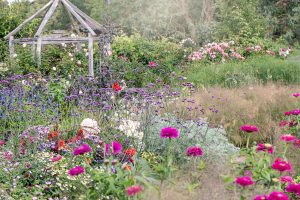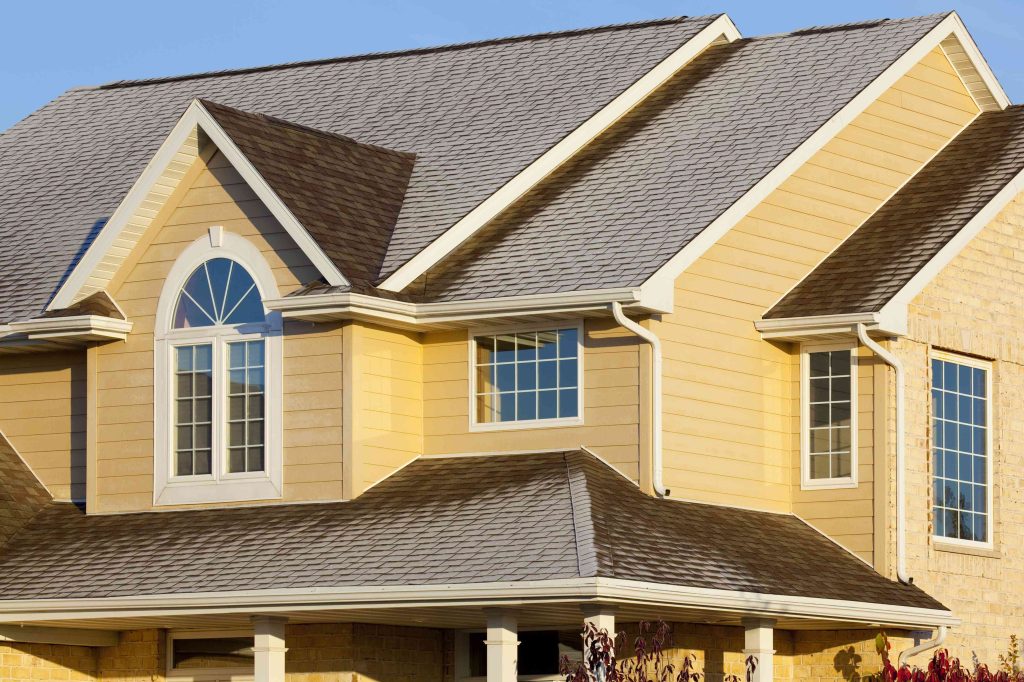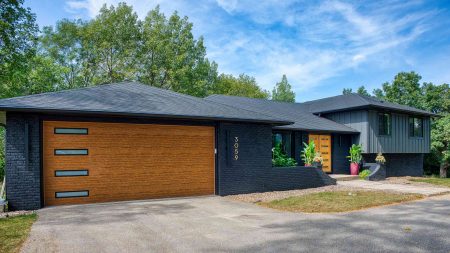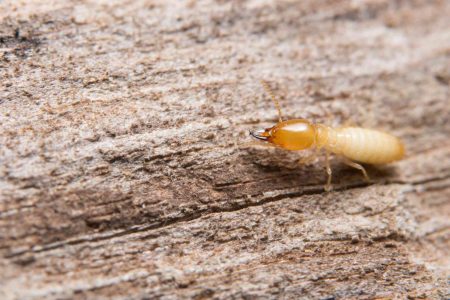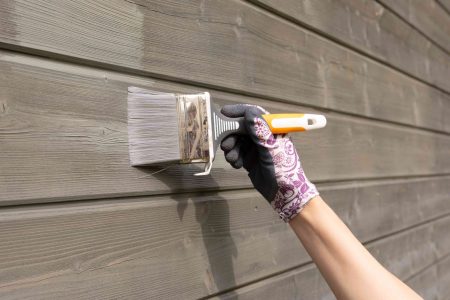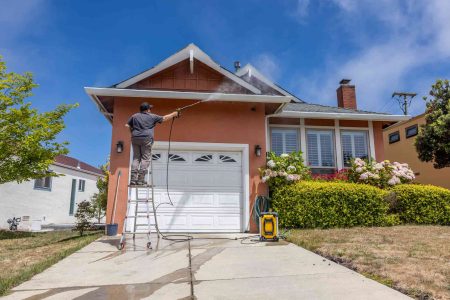The best siding for a house depends on many factors, including cost, the home’s architectural style, maintenance, and durability. House siding, along with roofing, is one of the biggest and most expensive exterior home purchases you will make. Cheap siding for a house is not always the best option, either, since it can affect resale value. Here, several types of siding emerge as the best for your home.
Siding Basics
Because siding is typically installed by contractors, labor costs drive up the total price; doing it yourself is usually not an option. Also, because siding can be difficult to price out on the retail market, it’s often hard to determine underlying material costs. The most common type of siding is vinyl followed by wood and engineered wood, but you could also use metal, brick, or stone.
-
01
of 09Vinyl Siding
Vinyl siding is inexpensive and quick to install. Vinyl siding does get a bad rap as being an inferior building material, and some of these criticisms are warranted, such as its flimsiness and poor thermal blocking abilities.
But as one of the cheaper house siding options out there, vinyl siding is without compare. Year after year, vinyl siding stands out as the least inexpensive type of siding that you can buy.
Installing vinyl siding can run an average of $7.50 per square foot (materials plus labor). That means vinyl siding can run as low as $3 a square foot to as high as $12 a square foot, depending on where you live.
Pros
- Vinyl siding is cheap, ranking among one of the least expensive siding materials.
- Many homeowners like the look of vinyl siding but the material’s aesthetics are always improving, and you can also paint it.
- Vinyl siding is a quick fix for a home since it goes up rapidly and covers 100 percent of the old siding.
- The material cleans easily with a manual scrubber, hose, and mild soap.
Cons
- Vinyl siding is usually not an appropriate option for a historical renovation.
- Vinyl siding has weak thermal-blocking R-values. However, it can be backed with thin insulation that slightly increases its insulating value.
- Vinyl siding is thin, flimsy, and prone to cracking under stress.
- This siding has poor resale value compared to other types of siding.
-
02
of 09Wood Siding
Wood siding is usually desired for its attractive, natural finish. Classic, standard wood siding can come in the form of horizontal lap siding planks, vertical board and batten planks, shakes, and shingles. Wood clapboard lap siding is one of the oldest types of house siding and is still known for its historic beauty. But wood siding is expensive and requires a lot of maintenance.
The average cost per square foot for wood siding is $3 to $10 but costs are often rising. Board and batten costs $1 to $2 per square foot for installation. Shiplap, also called Dutch, clapboard, bevel, and channel wood siding, costs $1.50 to $3 per square foot to install because it is made from softwood like pine and fir. Tongue-and-groove vertical siding can be a bit more expensive at $2 to $5 a square foot.
Pros
- Wood siding can last for 40-plus years when maintained.
- Many species of wood can be made into wood siding, from pine to redwood.
- Wood siding has many attractive styles.
- Wood siding adds value to your home and is good for resale value.
- Board and batten can be used to make a home appear taller than it is.
Cons
- Wood siding may not always work best for extremely wet, rainy, and snowy regions.
- Wood siding is a fairly involved and time-consuming installation process.
- It requires extensive maintenance and repairs, including painting or staining.
- Softwood wood siding is more susceptible to rot and termites.
-
03
of 09Fiber-Cement Siding
In several ways, fiber-cement siding is one of your best house siding options. Fiber-cement siding is durable and fire-resistant. It looks much like real wood siding, and it tends to command higher resale prices than other types of siding.
The average cost per square foot for fiber-cement siding is $10. However, depending on the brand and your timing (prices may surge at any time), you may pay between $5 and $14 per square foot.
Pros
- Fiber-cement is considered a premium product and garners better resale value than vinyl and plywood siding.
- Fiber-cement siding resists fire. For example, HardiePlank has a one-hour fire rating, which is much better than vinyl or natural wood.
- Fiber-cement siding is thick and closely mimics real shiplap wood siding.
Cons
- Fiber-cement siding can be difficult to install as a DIYer and should be contracted out to qualified fiber-cement installers.
- Though fire-resistant, it is not fire-proof. Fire-resistant means that it slows down the spread of fire. Fiber-cement’s cellulose or wood content allows it to burn.
- Fiber-cement material and installation can be expensive.
-
04
of 09Metal Siding
Metal siding, popular for much of the 20th century, eventually fell out of fashion until recent times. Manufacturers have added features such as more realistic texturing and improved joints which make metal an option for some homeowners. Here are the types of metal siding options:
- Aluminum
- Corrugated metals
- Seamless steel
- Zinc
- Copper
The average cost per square foot for metal siding fluctuates greatly depending on market conditions and tariffs. Uncoated steel and aluminum are moderate in cost. Average costs (materials plus installation) run $3 to $6 per square foot for aluminum and $4 to $8 per square foot for steel. Vinyl- or plastic-coated aluminum is more expensive.
Pros
- Metal has tiny, almost invisible seams between the panels. Other types of siding, such as fiber-cement siding, requires larger caulked seams.
- Metal siding might be considered to be eco-friendly and green since it is not a petroleum-based product (like vinyl siding), but making metal siding is highly energy-intensive.
- Architectural-grade metal siding can be a good choice for modern-styled homes.
- Metal siding is a good option if you live in a region where there is any danger of wildfire.
- It can be installed over wood siding in some instances.
- Seamless steel is strong and resists shrinking and bulging during extreme temperature changes.
- Corrugated steel siding can easily stand up to the harshest winter or summer weather.
- Copper is corrosion-resistant.
- Zinc siding is easy to fabricate, maintenance-free, durable, and long-lasting.
Cons
- Metal transmits thermal energy, which is not desirable for siding.
- Like vinyl siding, metal (especially aluminum) dents easily. But like vinyl, it too can be backed with foam insulation, which helps prevent dents.
- Metal siding can be noisy, especially in rain or hail storms.
- Metal tends to fade.
- Metal siding is not a do-it-yourself installation project.
Continue to 5 of 9 below -
05
of 09Exterior Siding Panels
Plywood siding (typically known as T1-11 or OSB) goes up fast because it comes in large sheets. Relatively inexpensive, plywood is a favored budget siding choice. Plywood for siding is not the type of exterior-grade plywood you might use for sheds. Home-grade exterior plywood siding has a rough-sawn, textured appearance, and its edges are ship-lapped to allow for a tight fit.
If you find that you are put off by plywood siding’s plain look, one way to make it work is to mate it with a more attractive, premium material on the house facade. For example, three sides of the house might be plywood, with the front being made of manufactured veneer stone or cedar shingles.
The average cost per square foot for plywood siding is between $2.25 to $6 for material cost plus about $500 in additional supplies for this typical DIY job.
Pros
- Plywood is a dimensionally stable wood that resists major expansion, contraction, warping, and swelling.
- Plywood siding comes in large 8-foot or longer sheets of 8 feet for faster installation.
- Vertical grooving on plywood makes it more pleasing to the eye.
- Plywood can be a relatively easy DIY siding project.
Cons
- Plywood is a low-cost option and not considered a premium material and may result in lower resale value.
- Plywood siding is large and requires two or more people to install it.
- Wood costs can be volatile because it is dependent on wood supplies in forests and on the supply chain.
-
06
of 09Cedar Shake Siding
Truly one of the more beautiful types of siding materials available, cedar shake siding does have a well-deserved reputation as a stately, classic material for homes of distinction.
The average cost per square foot for cedar shake siding is $3 to $10 per square foot, installed.
Pros
- Cedar often leads to higher resale value.
- Cedar contains natural oils that help it withstand weathering.
- Cedar shake siding can be combined with other types of siding for a unique look.
- Cedar siding can be allowed to weather to an attractive silver-gray color.
Cons
- Cedar shake requires more maintenance than other siding materials.
- Cedar shake requires skilled labor for installation for attractive and water-tight results.
- Cedar shake siding is not fire-resistant or fire-proof, though it can be treated to make it less prone to catching on fire.
-
07
of 09Brick Siding
Brick is made of fired clay and it’s desirable as siding because it’s highly durable, until it needs maintenance like repointing and tuckpointing. Quality brick veneers are also attractive and durable, although they don’t have the longevity of solid brick.
The cost for solid brick or brick veneer siding averages between $3 and $10 per square foot.
Pros
- Brick comes in a wide variety of colors.
- Brick lasts for centuries and rarely needs repairs for at least its first 25 years.
- Framed walls with brick veneer siding can be insulated.
- Brick won’t rot, warp, or melt, and it is impervious to insect infestations.
Cons
- Brick is an extremely heavy siding material and the existing foundation needs to be extremely durable to endure the weight.
- Because of its weight, installing brick siding is very time and labor-intensive and expensive.
-
08
of 09Stucco Siding
Stucco, and even synthetic stucco, is a popular and relatively inexpensive residential siding material that can be easy to apply over a variety of shapes. Rustic-style Spanish Colonial homes in the American Southeast, Southwest, and California are known for their characteristic stucco exteriors and red clay roof tiles. Composed of sand, Portland cement, and lime, real stucco is also very durable in high-humidity environments, such as Florida. However, when stucco is subject to high winds, there’s concern over how well it resists wind-driven rain and moisture.
Costs to stucco a house tend to be based on the condition of the walls. Damaged or imperfect walls will increase time, labor, and ultimately, the cost of the project. The average cost per square foot for stucco siding ranges between approximately $6.53 to $9.55.
Pros
- Since it’s mineral-based, stucco is fire-resistant.
- It contains no chemicals, so it’s environmentally friendly.
- Though stucco is fragile, one of its best qualities is that it is easy to repair.
Cons
- Cracks and holes will enlarge on their own if not repaired.
- Stucco is very porous and absorbs moisture.
- Stucco can become stained with dark spots due to moisture absorption.
Continue to 9 of 9 below -
09
of 09Stone Veneer Siding
Like brick veneer, you can have the beautiful effect of stone siding with stone veneer. Stone veneer siding can be made from granite, limestone, slate, and other types of stone. Stone veneer can be one of the most expensive types of siding. Precast stone veneers and facings are more affordable. Some stone veneers look quite genuine, while others aisre clearly artificial.
The materials and installation cost for stone veneer siding falls between $35 and $50 per square foot. Typically, only a portion of a house’s siding is covered in stone veneer.
Pros
- Stone veneer is impervious to weather when correctly installed and sealed.
- Stone veneer is often used in conjunction with other less costly siding materials for a beautiful aesthetic look.
- It is lightweight making it easy to cut and handle.
- Stone veneer is very accessible to source.
Cons
- Stone veneer can look overly homogeneous versus the imperfect beauty of real stone.
- Colors of stone veneer may fade over time.
- Stone veneer is often affected by moisture problems and it can become brittle if it is not maintained or sealed properly.
- You may need to raise or alter your foundation to handle the weight of the veneer.
Choosing Siding
Before choosing a siding material, make sure to consider the benefits and disadvantages of each. Some materials will be low-maintenance, while others will require regular sealing. Some, like stone, won’t be affected by weather, while others like plywood may warp or crack in humidity. Do you live somewhere cold? You may want a siding that can be backed with insulation. Finally, you’ll want to consider budget and where these materials fall in it.
Read the full article here



